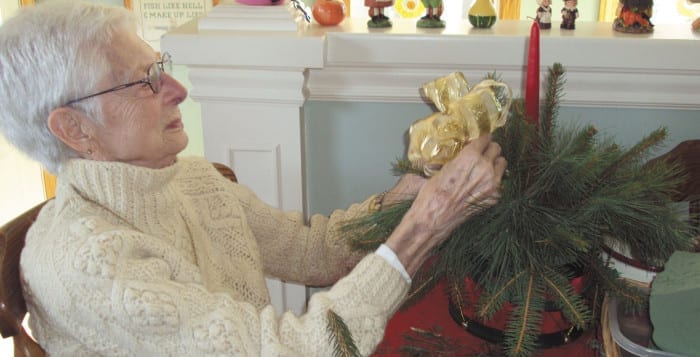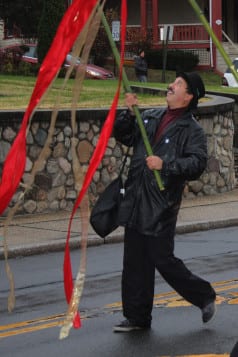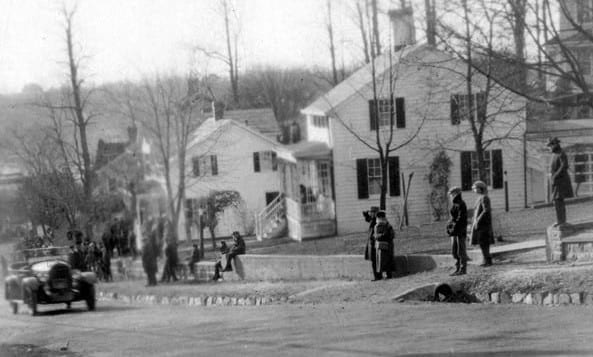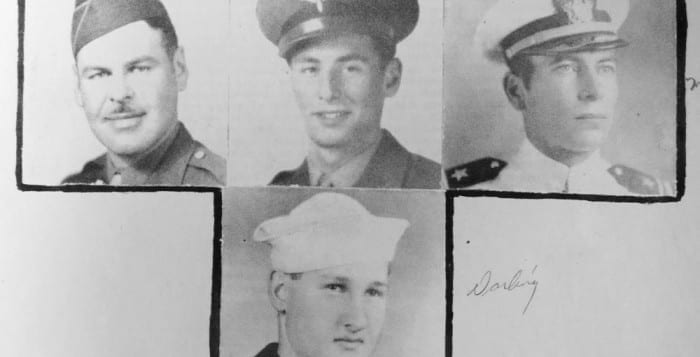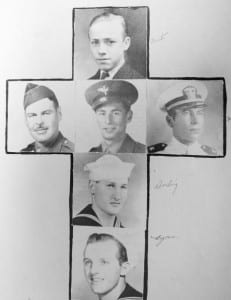By Ernestine Franco
Are you looking to add some natural elements to your holiday decorations? If your answer is yes, then the fourth annual Sound View Garden Club’s Greens Sale is the place to be. The Greens Sale will take place on Saturday, Dec. 12, from 10 a.m. to 2 p.m. on the second floor of the Sound Beach Firehouse.
Centerpieces, wreaths, swags and many other items all made from fresh, live natural materials will be available to adorn your homes. In addition there will be raffle items and a door prize. Light refreshments will be served.
All the arrangements have been made by the 30 club members, who meet monthly at the Sound Beach Fire House. Watching some of the members as they put together the arrangements is like watching artists at work. They take pieces of branches and bits of plants and dried flowers and create beautiful holiday pieces. The love and creative energy that goes into every piece is evident.
And their work is not done once the sale is over. As Ann Moran, president of the club and resident of Sound Beach, said, “The money we raise from the sale allows us to fund our other gardening projects, although like plants we go into a dormancy period until next spring.” The club may be only five years old, but it is very active in the surrounding communities.
Members maintain the garden at the Good Shepherd Hospice at St. Charles Hospital in Port Jefferson, a special place where hospice clients can sit and enjoy a peaceful natural corner filled with beautiful flowers and plants. “The landscapers did a great job when the hospice garden was first installed. But it is the continuing maintenance that we [the club members] are proud to provide that keeps it the inviting place it is and allows us to create a soothing garden,” said Ginny Drews, resident of Sound Beach. The annual flowers they plant at the hospice are purchased with the money raised at the Greens Sale.
Members also plant and maintain the flowers at the 9/11 Memorial of the Sound Beach Fire Department as well as the plantings at the Sound Beach Civic Association Veterans Memorial.
Beryl Wood, of Ridge, sees the garden club as a “lovely way for the members to get together and do some good for the community, and this club is one of the most cohesive clubs I have ever belonged to.” Wood is not only a club member —she also holds the position of accredited master judge with the National Federated Garden Clubs of America.
With some minimal care, all the plants in the sale will last well into the new year. So come to the Greens Sale and not only decorate your homes but support ongoing club projects. Admission is free and all are welcome.
The Sound Beach Firehouse is located at 152 Sound Beach Blvd., Sound Beach. If you have any questions, please call Ann Moran at 631-821-9650.

